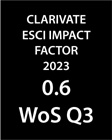A szlovákiai regionális fejlesztéspolitika s annak középtávú dél-szlovákiai határ menti vetülete az uniós támogatáspolitika tükrében
DOI:
https://doi.org/10.17649/TET.22.3.1190Kulcsszavak:
regionális politika, intézményrendszer, Dél-SzlovákiaAbsztrakt
A tanulmány a regionális fejlesztéspolitika szlovákiai feltételrendszerét vizsgálja, kiemelve a magyar kisebbség által lakott dél-szlovákiai határ menti sajátosságokat, mely régiót a többségi nemzet fejlesztéspolitikai döntéshozói sokszor hátrányosan diszkriminálnak, elsősorban a többségében szlovák nemzetiségű lakosság által lakott régiók fejlesztését kezelik prioritásként. Az elemzés az uniós csatlakozást megelőző és az azt követő 4 év idősíkjában mozogva áttekintést ad a politikai környezettől a regionális intézményrendszeren át a térségfejlesztési stratégiákig, kiemelve a szlovák–magyar határ stratégiai megjelenését az érintett határ menti önkormányzati kerületek gazdasági és szociális fejlesztési programjaiban. A tanulmány továbbá felvázolja az uniós támogatáspolitika szlovákiai megjelenését, számba veszi az előző, valamint a jelenlegi programozási időszak alapfeltételrendszerét.
##submission.downloads##
Megjelent
Hogyan kell idézni
Folyóirat szám
Rovat
License
Copyright (c) 2008 Lelkes Gábor

This work is licensed under a Creative Commons Attribution 4.0 International License.
A folyóiratban publikálni kívánó szerzők elfogadják a FELHASZNÁLÁSI ENGEDÉLYBEN részletezett feltételeket.






